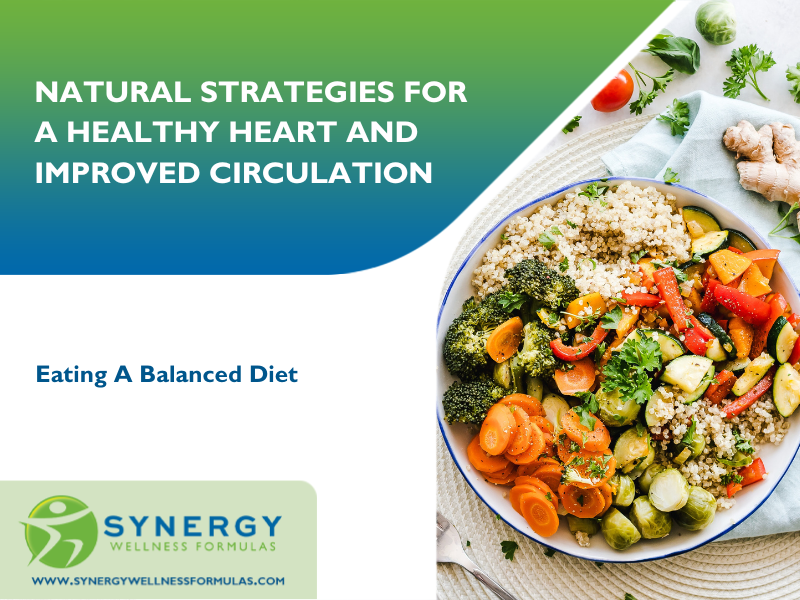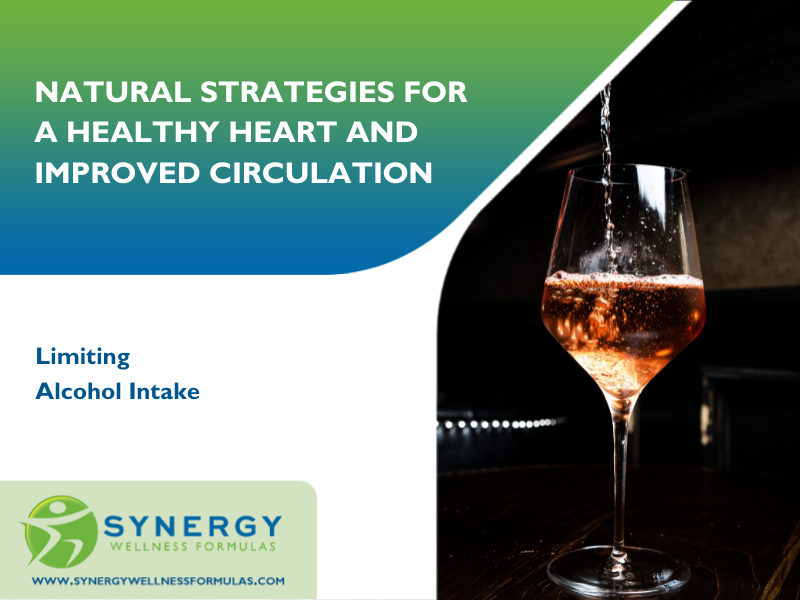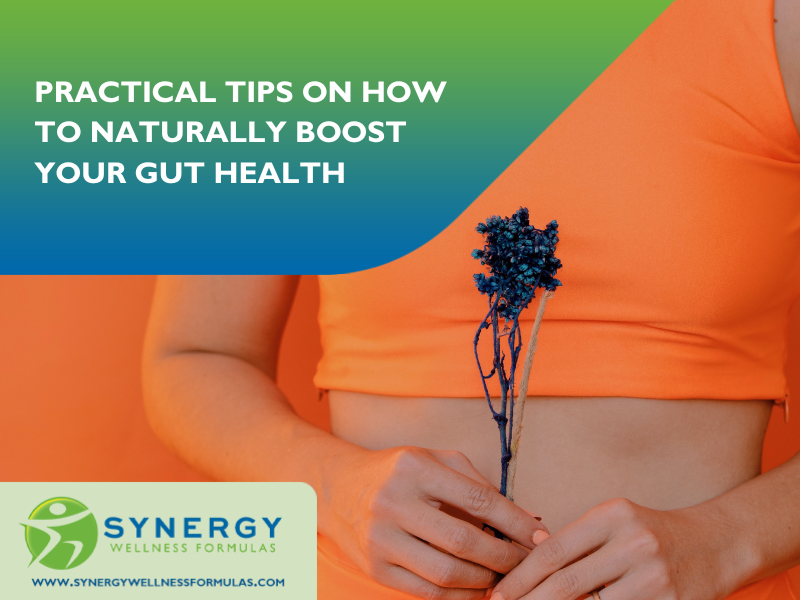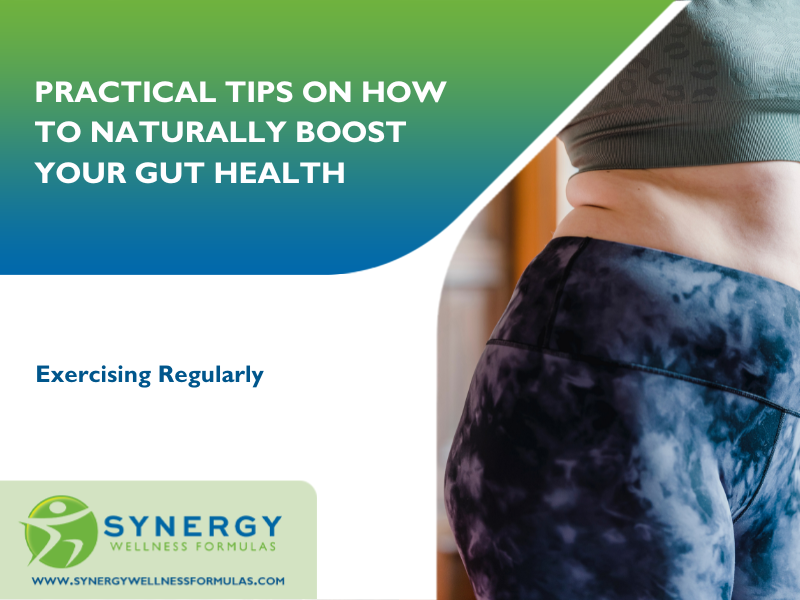Enhance Your Cardiovascular Health Naturally With Amino Acids And Essential Nutrients

Do you want to improve your cardiovascular health naturally? There are many ways to do so, but one effective method is incorporating amino acids and essential nutrients into your diet. These natural compounds can help support and strengthen your heart health, allowing you to live a longer and healthier life.
Cardiovascular health is incredibly important, as it affects various aspects of your life. From your energy levels to your ability to exercise, having a strong and healthy heart is crucial. Amino acids and essential nutrients can help you achieve this by supporting your cardiovascular system and providing your body with the nutrients it needs to function optimally. In this article, we’ll dive deeper into these natural compounds, their benefits, and how you can incorporate them into your daily routine to enhance your cardiovascular health.
Key Takeaway
Cardiovascular health is crucial for overall well-being, and incorporating amino acids and essential nutrients into your diet can significantly improve your heart’s function. Amino acids play a vital role in repairing and maintaining cardiovascular tissues, while essential nutrients, such as CoQ10, magnesium, and omega-3 fatty acids, help to reduce inflammation, maintain blood pressure, and support healthy blood flow. Adopting a balanced diet, engaging in regular exercise, managing stress, and getting sufficient sleep are additional lifestyle changes that can further enhance your cardiovascular health.

The Importance Of Cardiovascular Health
Maintaining a strong and healthy heart is crucial for living a long and active life. Your heart is responsible for pumping blood throughout your body, delivering oxygen and nutrients to your organs and tissues. Without a healthy heart, your body cannot function properly, leading to a range of health problems. To keep your heart healthy, it is important to engage in physical activity and maintain healthy dietary habits.
Regular physical activity is essential for cardiovascular health. Exercise helps to strengthen your heart and improve blood flow, reducing the risk of heart disease and other cardiovascular problems. Aim for at least 30 minutes of moderate-intensity exercise most days of the week. This can include activities such as brisk walking, cycling, swimming, or dancing. Additionally, incorporating strength training exercises can help to build muscle and improve overall fitness.
In addition to physical activity, your dietary habits play a crucial role in maintaining cardiovascular health. A diet rich in fruits, vegetables, whole grains, and lean proteins can help to reduce the risk of heart disease. Avoiding processed foods, sugary drinks, and excessive amounts of saturated and trans fats can also help to keep your heart healthy. Additionally, limiting your sodium intake can help to reduce the risk of high blood pressure, a major risk factor for heart disease.
Understanding amino acids and essential nutrients can also play a role in enhancing cardiovascular health. Amino acids are the building blocks of protein, which is essential for muscle growth and repair. Certain amino acids, such as arginine and citrulline, have been shown to improve blood flow and reduce the risk of heart disease. Additionally, essential nutrients such as omega-3 fatty acids and vitamin D have been linked to improved cardiovascular health.
By incorporating physical activity, healthy dietary habits, and essential nutrients into your lifestyle, you can enhance your cardiovascular health naturally. Understanding the role of amino acids and essential nutrients can also help to further improve your heart health. With these simple lifestyle changes, you can reduce your risk of heart disease and enjoy a long and active life.

Understanding Amino Acids
Do you know how amino acids can benefit your body and keep your heart healthy? Amino acids are the building blocks of proteins, which are critical for the structure and function of all cells in your body. There are twenty different types of amino acids, each with a unique chemical structure that determines its specific function in the body. Amino acids play a crucial role in maintaining your cardiovascular health by supporting the production of nitric oxide, which helps to dilate blood vessels and improve blood flow.
Amino acid structure is essential for its function in the body. The structure of an amino acid consists of a central carbon atom, an amino group, a carboxyl group, and a side chain. The side chain is what distinguishes one amino acid from another and determines its unique properties. Some amino acids are essential, meaning that your body cannot produce them, and you need to obtain them from your diet.
Amino acid functions in the body are diverse, and they are involved in many physiological processes, including the regulation of blood pressure, the synthesis of hormones and neurotransmitters, and the maintenance of muscle mass. Amino acids also play a critical role in the immune system by supporting the production of antibodies that fight off infections.
Understanding the importance of amino acids for cardiovascular health is crucial. Amino acids such as arginine and citrulline support the production of nitric oxide, which improves blood flow and reduces the risk of heart disease. Incorporating foods rich in amino acids, such as lean meats, fish, eggs, and nuts, into your diet can help support your cardiovascular health. In the next section, we will discuss essential nutrients for heart health, which, when combined with amino acids, can enhance your cardiovascular health naturally.

Essential Nutrients For Heart Health
You need to know what nutrients your heart needs to stay healthy and strong, and incorporating them into your diet can make a big difference. Here are three essential nutrients that can enhance your cardiovascular health naturally:
- Omega-3 Fatty Acids: These healthy fats decrease inflammation, lower triglyceride levels, and reduce the risk of heart disease. You can find them in fatty fish like salmon, tuna, and mackerel, as well as in chia seeds and walnuts.
- Magnesium: This mineral is vital for regulating heart rhythm, blood pressure, and muscle function. It also helps reduce stress and anxiety, which can contribute to heart disease. You can get magnesium from leafy greens, whole grains, nuts, and seeds.
- Vitamin D: This vitamin helps your body absorb calcium, which is essential for strong bones and muscles, including your heart. It also reduces inflammation and regulates blood pressure. You can get vitamin D from sunlight, fatty fish, and fortified dairy products.
While supplements can provide these nutrients, it’s better to get them from your diet whenever possible. Natural nutrients from food are more easily absorbed and utilized by your body than synthetic versions. However, if you can’t get enough of these nutrients from your diet, supplements can be a useful addition.
Incorporating these essential nutrients into your diet can help enhance your cardiovascular health naturally. By choosing whole foods and supplements wisely, you can support your heart and overall health. In the next section, we’ll explore the benefits of amino acids and essential nutrients for your body and mind.

Benefits Of Amino Acids And Essential Nutrients
Incorporating amino acids and essential nutrients into your diet can have surprising benefits, such as improving cognitive function and reducing symptoms of anxiety and depression. But did you know that these nutrients can also have a positive impact on your cardiovascular health? Amino acids, for instance, play a crucial role in muscle development, which is essential for maintaining a healthy heart. When you exercise, your muscles require more oxygen, and your heart responds by pumping more blood. Amino acids help to build and repair muscle tissue, thereby enhancing your body’s ability to perform physical activities.
Additionally, essential nutrients like vitamins C and E, magnesium, and potassium have been shown to reduce the risk of heart disease in athletes. Athletes often face an increased risk of heart problems due to the stress placed on the heart during intense physical activity. These nutrients help to protect the heart by reducing inflammation and oxidative stress, which can damage the heart and blood vessels over time.
Moreover, amino acids and essential nutrients can help to lower blood pressure and cholesterol levels, which are two major risk factors for heart disease. For example, studies have shown that arginine, an amino acid, can help to lower blood pressure by relaxing blood vessels. Similarly, omega-3 fatty acids, which are found in foods like fish and nuts, can help to lower triglycerides and LDL cholesterol levels, while increasing HDL cholesterol levels.
Incorporating amino acids and essential nutrients into your diet can be a simple and effective way to improve your cardiovascular health. By consuming foods that are rich in these nutrients, such as lean meats, fish, nuts, and leafy greens, you can reap the benefits of a healthy heart. So, whether you’re an athlete looking to protect your heart or simply looking to improve your overall health, consider adding more amino acids and essential nutrients to your diet. Your heart will thank you!

Incorporating Amino Acids And Essential Nutrients Into Your Diet
If you’re looking to incorporate more amino acids and essential nutrients into your diet, there are a few key ways to do it. First, meal planning can help ensure that you’re getting a variety of foods that are rich in these nutrients. Additionally, supplementation can be a helpful way to boost your intake, whether through protein powders or other supplements. Finally, there are plenty of recipes out there that are specifically designed to be high in amino acids and essential nutrients, making it easy to get the nutrition you need.
Meal Planning
Plan your meals carefully to make sure you’re giving your body the best chance to thrive and feel amazing. Incorporating amino acids and essential nutrients into your diet is easier than you think. Start by including plant-based options in your meals like lentils, beans, and quinoa. These are affordable and budget-friendly meals that are packed with essential nutrients, amino acids, and antioxidants that your body needs to function properly.
You can also add more fruits and vegetables to your meals to increase your intake of vitamins and minerals. Plan your meals around your protein source and add in healthy fats like avocado and nuts to keep you feeling full and satisfied. By planning your meals carefully, you’ll be able to naturally enhance your cardiovascular health and overall well-being. With a balanced diet, you’ll be able to reduce your risk of heart disease and other chronic illnesses.
As you focus on meal planning, remember that supplementation can also play an important role in enhancing your cardiovascular health. By incorporating amino acid supplements into your routine, you can give your body an extra boost of essential nutrients that may be lacking in your diet. Keep reading to learn more about the benefits of amino acid supplements and how they can help you achieve optimal health.
Supplementation
So you’re thinking about boosting your health with some fancy supplements, huh? Well, let’s dive into the world of supplementation and see what all the fuss is about. There are many different types of supplements available on the market, but not all of them are created equal. Here are three supplements that have been shown to enhance cardiovascular health:
- Omega-3 Fatty Acids: These essential fatty acids have been shown to reduce inflammation, lower blood pressure, and decrease the risk of heart disease.
- Coenzyme Q10 (CoQ10): This antioxidant helps to protect the heart from oxidative stress and improve overall energy production.
- L-Arginine: This amino acid helps to improve blood flow by increasing the production of nitric oxide, which relaxes blood vessels and improves circulation.
When it comes to supplementation, it’s important to follow dosage recommendations and consult with a healthcare professional before starting any new supplements. Taking too much of a supplement can be harmful, so it’s important to stick to recommended dosages. With that being said, supplementation can be a helpful addition to a healthy diet and exercise routine in promoting overall cardiovascular health.
Now that you know about the benefits of supplementation, let’s move on to some delicious recipes that will help you incorporate essential nutrients into your meals.
Recipes
Get ready to tantalize your taste buds with these mouth-watering recipes that are packed with goodness to keep your heart happy and healthy. Healthy meal options don’t have to be boring or tasteless. With the right cooking tips and ingredients, you can create delicious meals that are also good for your heart.
Start by incorporating more leafy greens and whole grains into your meals. Try making a spinach and quinoa salad with toasted almonds and a lemon vinaigrette dressing. Or, swap out your white rice for brown rice in your stir-fry dishes. Adding lean protein sources like grilled chicken or salmon can also boost the nutritional value of your meals. With these healthy meal options, your heart will thank you for nourishing it with the essential nutrients it needs to function properly.
Now that you’ve got some tasty recipes to try, it’s time to pair them with regular exercise to enhance your cardiovascular health even further.

Exercise And Cardiovascular Health
You can easily improve your heart health by incorporating exercise into your routine. Cardiovascular exercise, such as running, swimming, and cycling, helps strengthen your heart and increases your aerobic capacity. Aerobic capacity refers to the ability of your body to use oxygen efficiently during exercise, which is important for maintaining a healthy heart and reducing your risk of developing cardiovascular disease.
To get the most benefit from cardiovascular exercise, aim for at least 150 minutes of moderate-intensity exercise per week. This can be broken down into 30 minutes a day, five days a week. If you’re new to exercise, start slowly and gradually increase the intensity and duration of your workouts. You can also mix up your routine with different types of exercise, such as dancing or hiking, to keep it interesting.
In addition to improving your heart health, exercise also has numerous other benefits, such as reducing stress, improving mood, and boosting your overall health. It can also help you maintain a healthy weight, which is important for reducing your risk of developing heart disease. So, if you’re looking to improve your cardiovascular health, make exercise a regular part of your routine.
By incorporating exercise into your routine, you can easily improve your heart health and reduce your risk of developing cardiovascular disease. However, exercise is just one component of a healthy lifestyle. In the next section, we’ll explore how stress management can also play a role in maintaining a healthy heart.

Stress Management And Cardiovascular Health
Don’t let stress be the one thing holding you back from a healthy heart – learn how to manage it effectively in the next section. Stress can have a negative impact on your cardiovascular health, but there are ways to manage it naturally. Here are some techniques you can use to reduce stress and improve your heart health:
- Mindful breathing: Take a few minutes out of your day to focus on your breath. Inhale deeply and exhale slowly, focusing only on your breath and nothing else. This can help reduce stress and calm your mind.
- Yoga for stress management and cardiovascular health: Practicing yoga can help reduce stress and improve your heart health. Yoga poses and breathing techniques can help lower blood pressure and reduce stress hormones in the body.
- Meditation techniques: Meditation can help reduce stress and anxiety, which can have a positive impact on your heart health. Try guided meditations or simply sit in silence for a few minutes each day to calm your mind and reduce stress.
- Natural supplements for stress relief: Certain supplements, such as ashwagandha and magnesium, can help reduce stress and anxiety. Always consult with a healthcare professional before taking any new supplements.
In addition to these techniques, it’s important to develop healthy coping mechanisms and relaxation techniques to manage stress. This can include things like exercise, spending time in nature, or engaging in hobbies you enjoy.
By incorporating these stress reduction exercises into your daily routine, you can enhance your cardiovascular health naturally. In the next section, we’ll discuss the importance of sleep for heart health and ways to improve your sleep habits.

Sleep And Cardiovascular Health
Improve your heart health while catching some z’s with these sleep tips in the current section. Sleep quality and duration play a crucial role in maintaining cardiovascular health. Good sleep hygiene is essential to ensure that your heart functions efficiently. Poor sleep can lead to various sleep disorders, including sleep apnea, which can significantly increase the risk of heart disease. Therefore, it is essential to prioritize sleep and make necessary changes to your sleep routine.
One of the most critical factors affecting sleep quality is the sleep environment. Creating a comfortable and conducive atmosphere can significantly improve sleep quality. Keep your bedroom quiet, cool, and dark to promote better sleep. Additionally, avoid using electronic devices before bedtime, as the blue light emitted by screens can interfere with sleep quality.
Apart from the sleep environment, maintaining a consistent sleep schedule is crucial for better sleep quality. Try to go to bed and wake up at the same time every day to regulate your body’s sleep-wake cycle. Avoid consuming caffeine or alcohol before bedtime, as they can interfere with sleep quality and duration.
In cases where sleep disorders such as sleep apnea are affecting your sleep quality, consult a healthcare professional. They can diagnose the condition and recommend appropriate treatment options. Treating sleep disorders can significantly improve sleep quality and reduce the risk of heart disease.
Incorporating these sleep tips into your routine can greatly enhance your cardiovascular health. Along with lifestyle changes such as regular exercise and a healthy diet, prioritize sleep to ensure your heart functions efficiently. In the subsequent section, we will discuss some more lifestyle changes that can improve your cardiovascular health.

Lifestyle Changes For Cardiovascular Health
If you want to improve your cardiovascular health, there are some lifestyle changes you should consider making. Firstly, quitting smoking is one of the most important things you can do to reduce your risk of heart disease. Secondly, reducing your alcohol intake can also have a positive impact on your heart health. Lastly, managing chronic conditions such as high blood pressure and diabetes is crucial for maintaining a healthy heart. By making these changes, you can take control of your heart health and lead a happier, healthier life.
Quitting Smoking
You know that quitting smoking is tough, but it’s one of the best things you can do to improve your heart health and overall well-being. Smoking damages your blood vessels and increases your risk of heart disease, stroke, and other cardiovascular problems. However, quitting smoking can be challenging, especially if you’ve been smoking for years. That’s where nicotine replacement therapy (NRT) comes in. NRT can help reduce your cravings and withdrawal symptoms, making it easier for you to quit smoking for good. There are different types of NRT, including nicotine patches, gum, lozenges, inhalers, and nasal sprays.
Remember, quitting smoking is not just good for your heart health, but it also improves your overall health and quality of life. You’ll breathe easier, have more energy, and reduce your risk of developing lung cancer and other smoking-related illnesses. So, if you’re ready to quit smoking, don’t hesitate to seek support from your family, friends, or healthcare provider. You can also join a support group or use quit-smoking apps to help you stay motivated and on track. And, as you quit smoking, consider reducing your alcohol intake to further improve your heart health.
Reducing alcohol intake is another lifestyle change that can help improve your heart health. Drinking too much alcohol can lead to high blood pressure, heart failure, and other cardiovascular problems. So, if you drink alcohol, it’s important to do so in moderation. By quitting smoking and reducing alcohol intake, you’re taking important steps towards improving your heart health naturally.
Reducing Alcohol Intake
Congratulations on taking the first step towards improving your cardiovascular health by quitting smoking! Now, let’s talk about another important aspect of a healthy heart: reducing your alcohol intake. While moderate alcohol consumption can have some health benefits, excessive drinking can increase your risk of heart disease and other health problems. Here are some tips to help you reduce your alcohol intake:
- Set a limit: Decide on a maximum number of drinks per week and stick to it. It’s important to be realistic and set a goal that you can easily achieve.
- Find healthy alternatives: Instead of reaching for a beer or a glass of wine, try a non-alcoholic beverage like sparkling water with fruit or a mocktail.
- Avoid triggers: Identify the situations or people that make you want to drink and try to avoid them or find ways to handle them without alcohol.
- Seek support: Talk to your friends and family about your goals and ask for their support. You can also consider joining a support group or seeking professional help if you’re struggling with alcohol detox.
Reducing your alcohol intake is an important step towards a healthier heart. In the next section, we’ll talk about how you can manage chronic conditions to further improve your cardiovascular health.
Managing Chronic Conditions
Oh great, managing chronic conditions – just what you wanted to hear while trying to stay healthy. But don’t worry, it’s not as daunting as it may seem. There are various ways to manage chronic conditions naturally, including nutritional supplements and lifestyle management.
Nutritional supplements such as omega-3 fatty acids, magnesium, and CoQ10 have been shown to improve cardiovascular health and manage chronic conditions such as high blood pressure and diabetes. Lifestyle management includes maintaining a healthy diet, regular exercise, stress management, and getting enough sleep. These changes may seem small, but they can have a big impact on your overall health and well-being. By incorporating these methods into your daily routine, you can effectively manage chronic conditions and enhance your cardiovascular health.
In conclusion, managing chronic conditions may seem overwhelming, but it’s important to remember that small changes can make a big difference. By incorporating nutritional supplements and practicing lifestyle management, you can naturally enhance your cardiovascular health and manage chronic conditions. The next step is to take action and start implementing these changes into your daily routine.

Next Steps
So, now that you’ve learned all about the benefits of incorporating these natural supplements into your routine, it’s time to take action and start reaping the rewards of a healthier heart. By exploring alternatives to traditional medication, you have the potential to improve your cardiovascular health in the long term. These essential nutrients and amino acids can be found in a variety of foods and supplements, making it easy to incorporate them into your daily routine.
To start enhancing your cardiovascular health naturally, begin by incorporating foods like nuts, fish, and leafy greens into your diet. You can also look into supplements like CoQ10, omega-3 fatty acids, and L-arginine, which have been shown to improve heart function and circulation. By making these small changes, you can start to experience the benefits of a healthier heart.
Remember to always consult with your healthcare provider before making any major changes to your routine, especially if you have a pre-existing condition. They can help guide you in making the best choices for your specific needs. By taking control of your cardiovascular health and incorporating these natural supplements into your routine, you can improve your overall well-being and live a happier, healthier life.
Incorporating these natural supplements into your routine can be a simple and effective way to enhance your cardiovascular health. By taking the time to explore alternatives and make small changes to your diet and supplementation routine, you can begin to experience the long-term benefits of a healthier heart. So, take the first step today and start prioritizing your cardiovascular health. Your body will thank you for it.

Frequently Asked Questions
What Are Some Common Sources Of Amino Acids And Essential Nutrients That Can Help Improve Cardiovascular Health?
Incorporating amino acids and essential nutrients into your diet can have numerous benefits for overall health, including improving cardiovascular health. While there are many sources of these nutrients, some common ones include lean meats, dairy products, nuts, and seeds. Additionally, supplementing with specific amino acids like arginine and carnitine may also provide cardiovascular benefits. To incorporate these nutrients into your diet, try adding lean protein sources to your meals, snacking on nuts and seeds, and considering supplements if needed. By prioritizing these essential nutrients, you can improve your overall health and support optimal cardiovascular function.
Are There Any Potential Side Effects Or Risks Associated With Supplementing With Amino Acids And Essential Nutrients For Cardiovascular Health?
When supplementing with amino acids and essential nutrients for cardiovascular health, there are potential concerns to keep in mind. It’s important to follow dosage recommendations to avoid any adverse effects. Additionally, it’s crucial to be aware of any interactions with medication or contraindications. Always consult with a healthcare professional before taking any new supplements to ensure they are safe for you to use. However, when taken correctly, amino acids and essential nutrients can be a natural and effective way to improve cardiovascular health.
Can Amino Acids And Essential Nutrients Be Used As A Replacement For Traditional Cardiovascular Medications And Treatments?
Imagine you’re on a journey to reach the top of a mountain. You’ve been walking for hours, and you’re starting to feel tired and out of breath. Suddenly, you come across a shortcut that promises to take you to the top in half the time. This shortcut is a natural remedy that claims to enhance your cardiovascular health using amino acids and essential nutrients. But can it replace traditional medications and treatments? While natural remedies may have their benefits, it’s important to remember that they should not be used as a replacement for doctor-prescribed medications and treatments. Effectiveness comparison studies have shown that natural remedies may not be as potent as traditional medications, and they may not work for everyone.
How Long Does It Typically Take To See Improvements In Cardiovascular Health After Incorporating Amino Acids And Essential Nutrients Into Your Diet And Lifestyle?
If you’re curious about how long it takes to see improvements in your cardiovascular health after incorporating amino acids and essential nutrients into your lifestyle, the answer may vary depending on your age and overall health. For younger individuals with fewer health complications, changes may be noticeable in as little as a few weeks. However, for older individuals or those with more severe health issues, the timeline for improvement may be longer. Regardless of age or health status, consistently incorporating these nutrients into your diet and lifestyle can have a lasting impact on your cardiovascular health. While there is no one-size-fits-all answer to the timeframe for results, the effectiveness of these nutrients has been well-documented in numerous studies. With dedication and patience, you can see positive changes in your cardiovascular health over time.
Are There Any Specific Dietary Or Lifestyle Factors That Can Interfere With The Effectiveness Of Amino Acids And Essential Nutrients For Cardiovascular Health?
Dietary restrictions and interactions with medication can potentially interfere with the effectiveness of amino acids and essential nutrients for cardiovascular health. It’s important to speak with your healthcare provider before incorporating any new supplements or dietary changes into your routine. Some medications can interact negatively with certain supplements, and certain dietary restrictions may limit your ability to consume the necessary amino acids and nutrients. However, with the guidance of a healthcare professional, you can find a plan that works for you and enhances your cardiovascular health naturally. Remember, it’s always better to be safe than sorry when it comes to your health.

Conclusion
Congratulations! You’ve learned about the importance of cardiovascular health and how amino acids and essential nutrients can naturally enhance it. By incorporating these nutrients into your diet, you can experience benefits such as improved blood flow, reduced inflammation, and increased cardiovascular function.
But don’t stop there! Remember, stress management and sleep also play a crucial role in maintaining a healthy heart. So, take steps to manage stress through activities such as meditation or yoga, and aim for 7-9 hours of quality sleep each night. Additionally, making lifestyle changes such as quitting smoking and increasing physical activity can also have a significant impact on your cardiovascular health.
Incorporating amino acids and essential nutrients into your diet is just the beginning of your journey towards a healthy heart. By making these lifestyle changes and focusing on stress management and sleep, you can truly transform your cardiovascular health. So, take action now and start implementing these changes, and before you know it, you’ll be feeling better than ever before! This is the first step towards a healthier and happier life, and it’s a journey that is well worth taking.





































































































